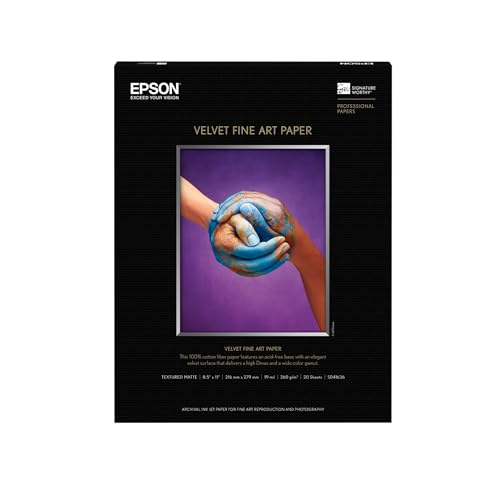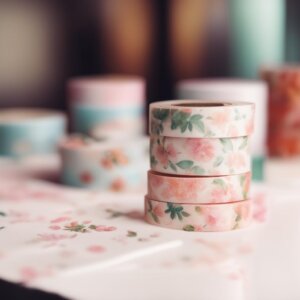Are copic markers permanent? If you want to be sure that your artwork or journaling won’t be destroyed by fading or smearing, then this guide is for you.
I’m here to give you an in-depth look into the inks used in them, as well as the techniques and tools you can use to make your artwork last for years to come. You’ll learn the difference between permanent and light fast art materials and will understand how to preserve your market artwork so that it stays vibrant and beautiful for up to 200 years (just read until the end)! Sound good? Let’s get started!
If you’re an artist, designer, or illustrator, you know that Copic markers are the go-to choice for many professionals.
They are renowned for their superior quality, blendability, color accuracy, and long-lasting results. So it’s no surprise that they’ve become a must-have tool for any artist.
Copic markers are alcohol-based markers that are often used in the anime and manga industries for coloring and shading characters and backgrounds.
With over 350 colors available, Copic markers can be sold individually or in sets. They are a great budget-friendly option for beginners or artists looking to expand their collection.
Are Copic markers permanent?
The answer is not a simple yes or no, as it depends on what you mean by “permanent.”
In the world of art materials, the term “permanent” is often used in relation to light fastness, which refers to a material’s resistance to fading when exposed to light over time.
In this sense, no markers can ever be truly permanent, including Copic markers — Classic, Sketch, or Ciao.
All markers, regardless of quality or brand, will eventually fade over time, some more quickly than others.
However, the answer to the question whether Copic markers are permanent can also be a “yes.”
The word “permanent” usually refers to alcohol or solvent-based markers that cannot be removed once they’ve dried.
All Copic markers are alcohol-based.
So they fit into this category, meaning they won’t come off once the ink has dried, unlike water-based markers that can be reactivated with water.
So, in short, the answer to the question “Are Copic markers permanent?” is yes and no.
If you’re looking for archival quality art supplies, Copic markers may not be a great choice as they are not light fast.
However, if you’re looking for something that offers versatility, vibrancy, and ease of use, then Copic markers could be the perfect fit.
Once they dry, Copic markers are considered permanent, so you can be sure that your artwork won’t smudge or smear.
What is light fastness?
When you’re selecting art materials, consider the light fastness of the medium you want to use.
This refers to how well it can withstand fading when exposed to light over time.
After all, you want your artwork to remain vibrant and beautiful for many years to come.
Markers aren’t the most light fast art materials.
This is because markers, including Copics, use dyes to create color.
And dyes aren’t as resistant to fading or color change as the pigments found in other media like paint and pastels.
So, unfortunately, all markers will eventually fade over time, no matter what their quality level or brand is.
It’s worth noting that not all markers are equally bad.
For example, top-of-the-range markers like Copics usually have a better light fastness than lower quality markers. So Copic markers are more permanent in that sense.
This is because they are made with superior dyes that are less likely to fade.
If you want your marker artwork to last as long as possible, you can take a few steps to protect it from fading.
This can include storing your artwork in archival boxes, varnishing it with a product like Golden Archival Spray Varnish, and digitizing it to make archival prints.
All this can help to extend the life of your artwork and ensure that it is enjoyed for many years to come.
What colorants are permanent?
Markers, including Copic markers, get their color from dyes, while other more light fast and archival media like paints get their color from pigments.
Dyes are colorants that dissolve in a liquid, while pigments are finely ground powders that are insoluble and are suspended in a binder.
When a marker is made, the dye or pigment is mixed with a liquid carrier that allows it to be applied to a surface.
Pigments are more resistant to fading than dyes.
This is because pigments are more stable and are less likely to react with light, heat, or other environmental factors that can cause fading.
In contrast, dyes are more likely to fade or change color when exposed to light.
Copic markers, like most markers, use dyes to create their colors.
This means that they are not as fade-resistant as media that use pigments, such as paint or pastels.
However, Copic markers are known for their high quality.
Their manufacturer uses top of the range dyes that are more resistant to fading or changing colors than the dyes used in cheaper markers.
This makes them a worthwhile investment for anyone who wants to create vibrant and long-lasting artwork.
Why are Copic markers considered “permanent”?
When talking about markers, “permanent” typically means those that are alcohol or solvent-based and can’t be taken off once dried.
In contrast, water-based markers, like those used in children’s coloring books or in some types of calligraphy, can be reactivated or taken off with water.
This makes them less permanent.
This also means that if the artwork gets wet, the colors may bleed or smudge, which can be frustrating for artists.
Copic markers are alcohol-based, which means they are permanent once dry and can’t dissolve in water.
That’s why they are a popular choice for artists and designers who want to create permanent artwork that won’t smudge or run if it gets wet.
Acid-free Ink in Copic Markers
Copic markers use acid-free ink, which is one of the reasons they are considered permanent, high-quality and relatively light fast markers.
Acid-free ink is less likely to degrade and fade over time compared to ink that contains acid.
This is important for artwork that is intended to last for many years.
Cheap markers may not use acid-free ink, which means they are more likely to fade and degrade over time.
This is another reason why Copic markers are a popular choice for artists who want their artwork to last.
While no marker is completely permanent in terms of light fastness, using markers with acid-free ink is a good way to help prolong the life of your artwork.
Longevity of Copic markers
While cheap markers may run out of ink quickly or may not be refillable, Copic markers can last for many years with proper care.
First, Copic markers are refillable.
This means that when the ink runs out, you can simply refill the marker with more ink instead of throwing it away and buying a new one.
This not only saves you budget in the long run but also helps to reduce waste.
In addition to being refillable, Copic markers also have replaceable nibs.
Over time, the nibs of the markers can become worn down or damaged, which can affect the quality of your artwork.
However, with Copic markers, you can simply replace the nib with a new one, rather than having to replace the entire marker.
Caring for your Copic markers can help them last a really long time! If they are regularly refilled and their nibs are replaced, they can be used again and again.
How to store Copic markers properly
Taking care of your Copic markers is important to make sure they stay in perfect condition.
Keep them away from sources of heat and direct sunlight.
This is necessary because extreme temperatures and UV rays can cause them to dry out, fade, or crack.
To preserve the markers in their best shape, store them horizontally, allowing the ink to spread evenly.
Also, make sure they are in a cool, dry place and their lids are sealed tight to keep the alcohol-based ink from evaporating.
If you’re an artist or designer who uses Copic markers frequently, it’s a good idea to invest in a good storage system. This will help to protect your markers from environmental factors.
You can use the brand’s own storage bags or an off-brand solution from Amazon.
How to preserve Copic artwork
While Copic markers are not completely light fast, there are some steps you can take to help preserve your artwork.
Storing it properly, away from direct sunlight, heat, and humidity, is essential in helping keep your colors vibrant and preventing them from fading or bleeding.
A great way to protect your artwork is by using archival boxes.
Archival boxes are specially designed containers that are made from acid-free materials.
They are designed to protect artwork and other important documents from environmental factors that can cause damage.
These boxes are also great for organizing and storing your artwork, as they come in a variety of sizes and styles to suit your needs.
Before putting your Copic artwork in an archival box, make sure that both the container and the paper are clean and dry.
You can use a soft brush or cloth to gently remove any dust or debris from the surface of the artwork.
It’s also a good idea to use acid-free tissue paper or interleaving paper to separate individual pieces of artwork to prevent them from sticking together.
There are many great products available for storing artwork in archival boxes, including brands like Lineco, HG Concepts, and Gaylord Archival.
These boxes are designed to provide maximum budget-friendly protection for your artwork.
How to varnish Copic artwork to make it more permanent
In addition to storing Copic artwork properly, another way to preserve it is by varnishing it.
Varnishing is the process of applying a clear coat to the surface of the artwork to protect it from damage and fading.
By varnishing the artwork made with Copic markers, you can make it more permanent and help it last longer and look better for years to come.
One product that professional artists often use for varnishing Copic artwork is Golden Archival Spray Varnish.
This spray varnish will cover your art with a beautiful, crystal clear finish that won’t yellow over time.
It’s extremely durable and resistant to dust, moisture and UV light damage.
And if you ever want to preserve your artwork, the coating can be removed with a special remover.
To use the Golden Archival Spray Varnish, first make sure your artwork is clean and dry.
Before you varnish your Copic artwork, test the varnish on a test piece.
Grab a piece of paper and use the same markers as the artwork you’re working on.
This way, you can be sure that the varnish doesn’t change the colors or texture of your masterpiece.
Sometimes, varnishing can slightly alter the artwork’s color, so testing it first is key.
Make sure to follow the instructions provided with the varnish and use it in a well-ventilated area.
Digitizing Copic artwork to keep it permanent forever
Digitizing your artwork made with Copic markers is a great way to make it truly permanent and preserve it literally forever.
By creating a digital copy, you can easily share your artwork with others and keep it safe from damage or loss.
Just don’t forget to create a few backups of your files.
Here are some steps to help you digitize your Copic artwork:
High-resolution scanning
To get the best quality digital copy of your artwork, you will need a high-resolution scanner.
There are many scanners available on the market, but some of the best ones for artwork are the Epson Perfection V850 Pro and the CanoScan LiDE 220.
Both of these scanners have a high resolution and are capable of capturing the vibrant colors of Copic artwork.
Archival Prints
Once you have a digital copy of your artwork, you can create archival prints and giclées that will last for many years.
Some of the best printers for creating archival prints include the Epson SureColor P800 and the Canon imagePROGRAF PRO-1000.
Archival prints and giclées are made using high-quality acid-free archival fine art paper and archival pigment-based inks that are designed to resist fading and other types of damage for up to 60-l years of light and gas fastness and up to 200 years of album life (according to Cannon)!
If you invest in the creation of archival art prints, you can be sure your Copic artwork will be preserved for many years to come.
Overall, while Copic markers may not be permanent in the archival sense. But with proper care and preservation, your Copic artwork can last for many years to come. So go ahead and create your masterpiece with confidence, knowing that your Copic markers will help bring your vision to life and that with the right preservation techniques, your artwork will endure for generations.

















